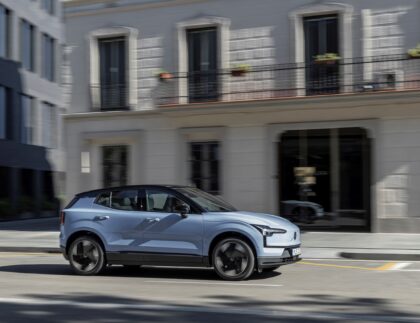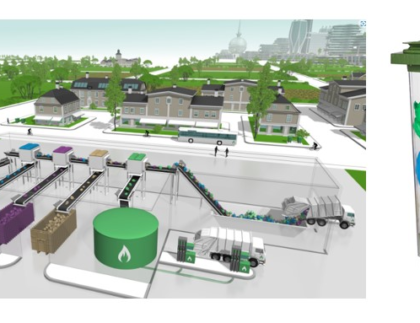
For all brands, the ultimate goal is to motivate customers to make a purchase. But what motivates customers to buy changes over time along with trends and the development of new technology? It is in the interest of companies to continuously transform their offers, to provide new and meaningful solutions, in order to remain relevant in the minds of consumers.
In past decades, marketers have used a traditional marketing “funnel” to motivate or “push” consumers, relying on marketing to lead the way in to new markets. This was achieved in stages. Consumers enter the funnel as they become aware of the product through ad campaigns or other marketing channels. If those have a convincing message that sticks, the customer enters the consideration phase that includes other similar brands in the category. In this phase, brands can develop a relationship and transform the consideration into an intent to buy. If all key indicators are ticked off, the consumer will make the purchase. If the customer was happy with the initial product experience and other aspects of its use, they will repurchase and become loyal customers. That was the game we played. A one-sided communication.
What we have discovered is that there are some major flaws with this model.
Only 13 per cent of our consumers are loyalty driven. The rest of us are still shopping after a purchase. 58 per cent switch brands from one cycle to the other.
As we move along the consideration phase, we increase the brands we consider to buy, which is the opposite of the traditional funnel.
The battleground to win is in the initial consideration phase. Two-thirds of the time we purchase the brands in our original consideration set.
In an increasingly digital age, we follow a very different consumer journey. We have seen the emergence of an increasingly informed consumer and, accordingly, we need to change our perception of the funnel to something more appropriate and relatable and in dialogue with the consumer.
It is preferable to see the customer journey as a circular journey with four primary phases representing potential battlegrounds where marketers can win or lose: consideration, evaluation, closure and post-purchase, with consumers’ experience considered in terms of initial consideration on one side and final purchase on the other.
This changing behaviour can be traced back to the digital tools readily available in our hands but also by the overwhelming selection of offers that consumers are exposed to on a daily basis. This has triggered some rational behaviours that simplify the decisions we make in our daily life.

As humans have a natural shortfall in processing power, we constantly look for ways to simplify evaluations. Because of our brains’ natural elimination process, we start with a pre-established set of brands in each product category. This can be applied to most categories. Customers begin an active evaluation process, in which they evaluate the pros and cons of each option and continue to “pull in” the information they need in order to convince themselves it’s worth their hard-earned dollars.
Throughout this journey we read reviews, take note of recommendations, rely on friends, make comparisons with competitors’ products, while making an abstraction of the data needed to make an informed decision. In this phase, the set of brands considered can double from the initial set.
The interesting insight is that when we finally make the selection and move to a purchase, researchers have noted that in two out of three occasions the consumer ends up buying a brand from the pre-established list already set in our mind at the start. This happens in almost all market categories and it leads us to conclude that if we want our brand to grab market share we need to find ways to be included in that so important initial consideration set.
After we make the purchase, we enter the second part of the loop, post-purchase or the user-experience journey. That is when we start interaction with the purchase, unboxing, installing, using, calling for support, repairing and finally discarding the product in a way we may hope is sustainable. It is here, during the post-purchase phase, we gather user experience that dictate whether we will return and buy it again.
It is an ongoing loop – the customer will always re-evaluate their decision to continue using a brand based on user experience and in parallel to a new innovation offered by other brands strong enough to compete with the initial consideration set.
“Awareness is far from enough to win unless consumers are actively shopping.”
The main conclusion we draw from this is that awareness is far from enough to win unless consumers are actively shopping. What they need is tangible feedback in use or strong brand reputation, both driven by innovation or a positive user experience. If exposed in any other situation much of that exposure does not trigger consideration.
Innovation on the other hand is a far more effective tool as it can trigger initial consideration if/when directed to the right and early segment. Not only to trigger an entry into the pre-selected few but also to provide differentiation in the offering and in providing a superior user experience that fulfils the unaddressed needs to the consumer.
According to a survey conducted by a Chicago-based marketing research firm, 84 per cent of consumers say it is somewhat or very important that the company they purchase from is innovative: 51 per cent say they have bought a product without fully understanding what it did or how it worked because they felt or heard it was cool; and 34 per cent agree that they like owning products that make them look innovative to others.
I hope that more companies will start to understand the importance of innovation and user experience so they can build strong brands and lasting brand strategies that will take advantage of this new understanding of consumers’ mindsets. It is only then, when they understand that brands cannot have one-dimensional communications and that it is necessary to move consumers from one loop to another, that they will understand that they have to keep them there to succeed.

Founder and innovation director of C’monde, a design and innovation agency in Hong Kong, Johan M Persson has a 20-year track record in design management, working with a slew of top-tier brands and government bodies. He is a frequently-appearing speaker, has been a visiting lecturer at Hong Kong Polytechnic University and award juror for the A&D Trophy Award. He has a Master of Science in industrial design from Umeå University and graduated from the National College of Art Craft and Design (Konstfack) in Stockholm in 2001.








